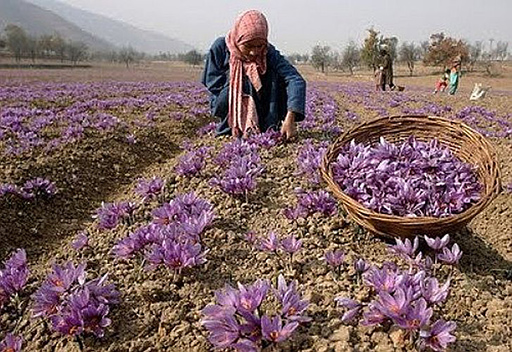

Saffron Histroy
Since its first documentation in the 7th Century BC, the long and interesting history of saffron spice traces back over 4000 years and traverses many civilizations, countries, and cultures. It began being used in the middle east and then branched out to conquer hearts worldwide, being utilized as a food seasoning, perfume, hair and clothes dye, and as a medicinal herb. Researchers have shown through historic documents that saffron has its origin in the Zargos mountain range in Iran, where around 1 Kg of saffron was used in the royal kitchen every day. The word saffron is derived from the Arabic word Zafaraan, it was the Arabs who planted saffron initially in Spain over 1000 years ago when they ruled the region. Since its initial use at the beginning of its history, right up until today saffron spice has remained the most expensive spice known in the World.
Today, saffron is mostly used as a unique spice for adding an attractive flavor and aroma to various dishes. Of course, more and more people are showing interest in the medicinal properties of this spice due to the fact that natural treatments are becoming more popular. Saffron is often divided into categories based on the country of origin. Currently, the main producers of Saffron are Iran, Afghanistan, Spain and Greece.
Today, saffron is mostly used as a unique spice for adding an attractive flavor and aroma to various dishes. Of course, more and more people are showing interest in the medicinal properties of this spice due to the fact that natural treatments are becoming more popular. Saffron is often divided into categories based on the country of origin. Currently, the main producers of Saffron are Iran, Afghanistan, Spain and Greece.
We export different grades of Saffron from Iran base on ISO3632. We supply saffron directly from TAVOONI ROUSTAEE which has SGS specification report.
We export Sargol, Negin , and Poshal Saffron from Iran to Europe and Amercia.
Find different grades specifcations as below:

Uses of Saffron
It is commonly used today in cooking, and the brighter red the spice is, the higher the quality. A little goes a long way when you are cooking with saffron. A pinch of the spice can be added to soups, stews, risotto and rice dishes, as well as to any tomato-based sauce.
The stigmas are also used to make medicine. Saffron is used for asthma,cough, whooping cough (pertussis), and to loosen phlegm (as an expectorant).
The stigmas are also used to make medicine. Saffron is used for asthma,cough, whooping cough (pertussis), and to loosen phlegm (as an expectorant).
Benefits of Saffron
Saffron contains more than 100 components, but the three most promising appears to be: Crocin which is responsible for its orange color, Picrocrocin which provides its bitter taste, and Safranal which gives its aroma.
Saffron benefits are countless. It has a long history in traditional healing and has been recently recognized for treating respiratory infections and disorders such as coughs and colds, scarlet fever, smallpox, cancer, hypoxia, and asthma. Other targets included blood circulatory disorders, insomnia, paralysis, heart diseases, stomach upsets, gout, chronic uterine haemorrhage, dysmorrhea, amenorrhea, baby colic, eye disorders, digestive stimulant, women menstrual pain, menopausal problems, and depression.
It also helps with memory loss, male impotency, encourages oxygen flow, speeds the healing of wounds, and prevents cell death.
It also helps with memory loss, male impotency, encourages oxygen flow, speeds the healing of wounds, and prevents cell death.
